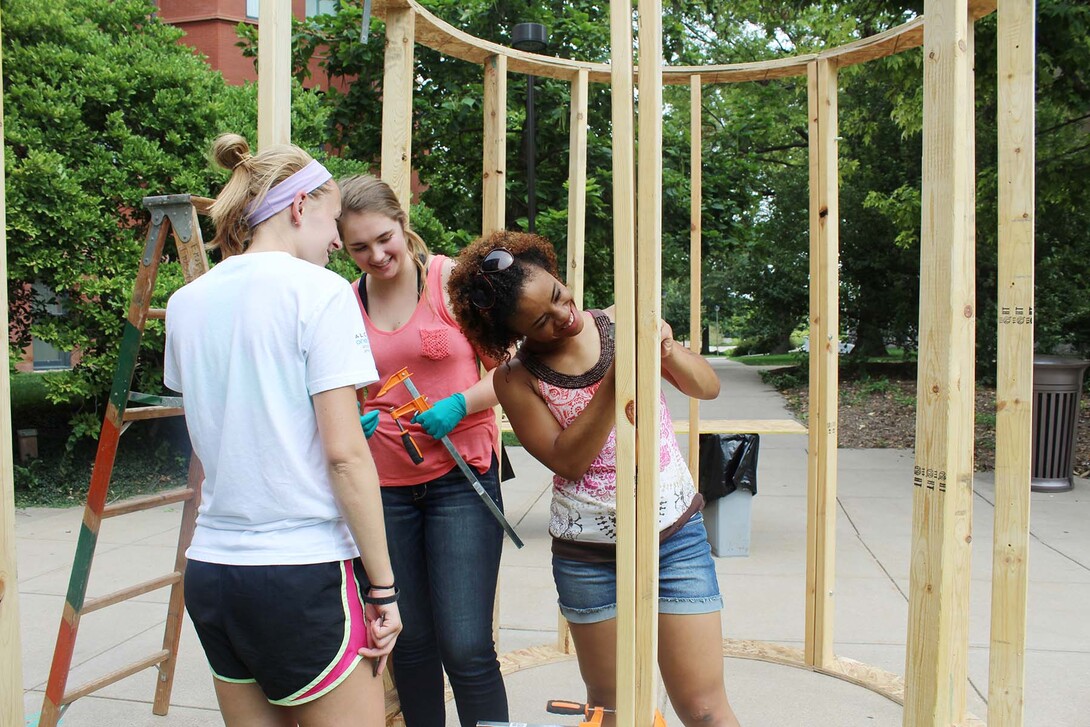
About 45 University of Nebraska-Lincoln College of Architecture students will transform select parking stalls in downtown Lincoln into temporary, urban public parks and spaces Sept. 16 for PARK(ing) Day 2016.
The exhibits – designed by nine student teams and one professional team – will be on display from 9 a.m. to 5 p.m. on P Street, between 11th and 14th streets.
The event is part of a global movement where citizens, designers and activists collaborate to change parking spots into habitable, park-like spaces for a day. The event began in 2005 when Rebar, a San Francisco art and design studio, converted a metered parking stall into a temporary public park. The local project is directed by Peter Olshavsky, assistant professor of architecture at the university, and sponsored by the American Institute of Architects’ Lincoln chapter, BVH Architects, The Clark Enersen Partners, Clark Architects Collaborative 3 and Schemmer.
The exhibits are part of a four-week team project for second-year architecture students, with guidance by faculty including Cristina Murphy, Olshavsky and Guillermo Yángüez. The project provides students with experience in designing, prototyping and building their creations. Each exhibit is pre-built modularly to allow for quick and easy installation the morning of the event. Most students will begin installing their exhibits around 8:30 a.m. and will be finished by 9 a.m. Local American Institute of Architects members and sponsors will review the students’ work and offer feedback.
The College of Architecture and its partners joined the national event five years ago. It started as an extracurricular event that was funded by an Eco-Leadership Grant for Canada-U.S. Fulbright alumni but is now part of the Architecture 210 course.
The project is a favorite for many students and has grown in popularity. In past years, it was held on campus but this is the second year that it will be displayed in downtown Lincoln.
By having PARK(ing) Day downtown, Olshavsky said he hopes to engage the public while promoting the value of design.
“This is a unique exercise that teaches students how to be responsible for the design process from early iteration to prototype to final construction,” Olshavsky said. “I’m always fascinated to watch how our students have the ability to evolve from concept to detail level quickly, and all the while having the tenacity and creativity to find ways to inhabit these parking stalls in truly unique ways.”








